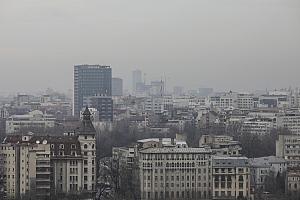Report: air pollution in Romania up to five times above safe levels

The air pollution in Romania is up to five times above safe levels, and only seven countries in the world met safe air pollution levels in 2023, according to a report by Swiss air quality technology company IQAir.
The World Air Quality Report, released this week, draws on data from more than 30,000 monitoring stations in 134 countries, territories, and regions. Of these, the air in 124 countries was found to go over safe levels of PM2.5 (fine particulate matter), according to World Health Organization (WHO) guidelines. PM2.5 particulates are inhaled into the lungs and have been linked to heart and lung disease, high blood pressure, increased risk of asthma, depression and anxiety, and premature death, according to Euronews.
The seven countries that met the safe guideline of five micrograms per cubic meter of air (µg/m3) or less were Australia, Estonia, Finland, Grenada, Iceland, Mauritius, and New Zealand. Puerto Rico, Bermuda, and French Polynesia also fell within safe levels.
In Europe, Iceland had the cleanest air, with 4µg/m3, followed by Estonia with 4.7µg/m3 and Finland with 4.9µg/m3.
European cities have shown improvement since the 2022 report, with 54% classified with safe levels of air pollution in 2023 compared with 39% the year before. Croatia showed the most progress in 2023 in lowering PM2.5 levels, with the annual average dropping more than 40% compared to 2022.
EU countries with pollution levels up to three times above the safe standard included Lithuania, the Czech Republic, Hungary, Malta, Slovakia, Bulgaria, Croatia, Poland, Cyprus, Slovenia and Italy.
Moldova, Romania, Albania, Greece, Turkiye, Serbia, and Montenegro had a pollution level up to five times above safe levels.
Bosnia and Herzegovina saw an 18% decrease in PM2.5 levels in 2023 compared to 2022 but remains the most polluted country in the region, followed by North Macedonia.
Igdir in Turkiye is Europe’s most polluted city, with PM2.5 levels over nine times the safe standard.
The countries with the worst air quality in the world were concentrated in South and Central Asia, home to the top 10 most polluted cities in the world. Bangladesh took the top spot, with 79.9 µg/m3 - more than 15 times higher than the WHO PM2.5 annual guideline. Pakistan came in second, with levels 14 times above safe standards. It was followed by India, with PM2.5 levels 10 times above the limit.
In 2019, Bucharest had a PM2.5 average of 18.4 μg/m³, putting it into the ‘moderate’ pollution ratings bracket. Some of the causes of pollution present in Bucharest would be the overuse of vehicles, especially older ones. Other factors contributing to the pollution levels are coal-fired power plants, factories, and other such industrial sites, coupled with environmental issues such as the removal of green areas in favor of new buildings and developments.
(Photo source: Inquam Photos | Octav Ganea)













